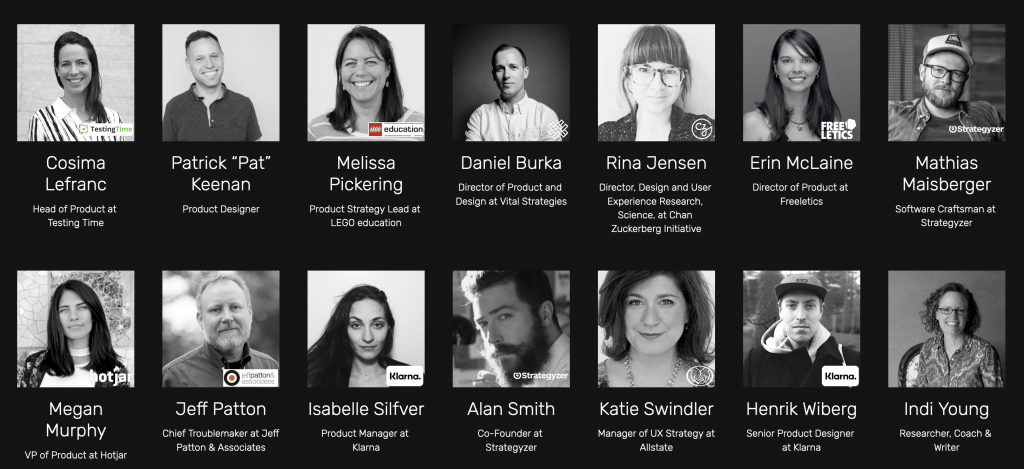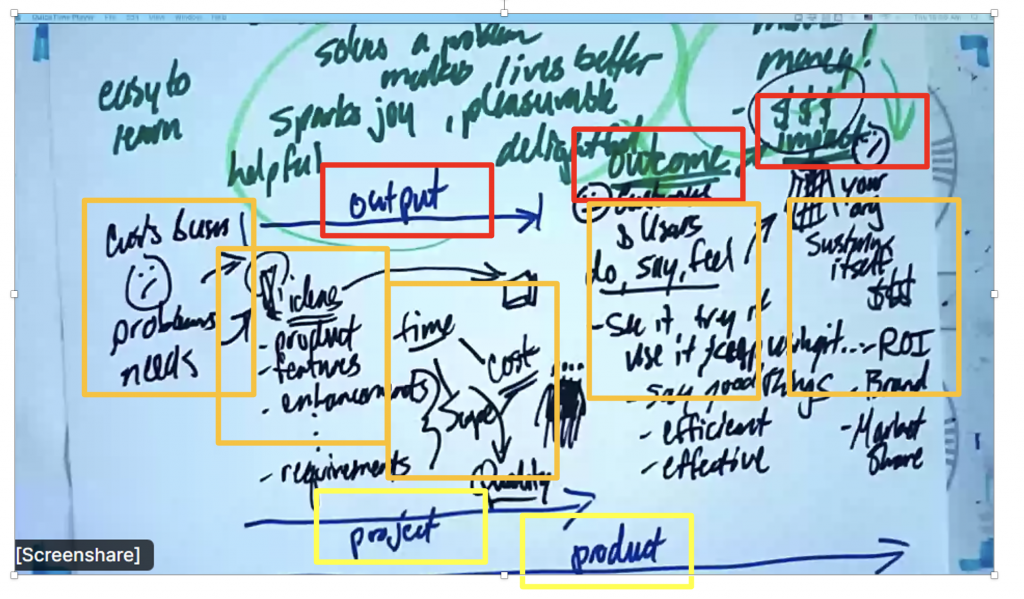If you wanna see a great Sci-fi movie than you have to watch THE CREATOR directed by Gareth Edwards (Star Wars Rogue One & Godzilla). The story is captivating (AI vs human beings), the acting is profound (especially Madeleine Yuna Voyles playing the “kid” Alphie) and the whole world-building credible – besides, that it is a little bit too near-term (2065). Also the scenery of Thailand is an important ingredient of the whole experience.
Fargo Season 5 Trailer
“Better sleep with both eyes open”🤣 One of my most beloved series gets into seson 5 on 21st November on FX. The latest installment of Fargo is set in Minnesota and North Dakota, 2019 and starring Jon Hamm (Mad Men), Juno Temple (Ted Lasso) and Jennifer Jason Leigh (Hateful 8). However, it is still unclear how and when the episodes will come to Germany.
True Detective Staffel 1

10/10: Da ich mir nicht mehr ganz sicher gewesen war, ob ich mir diese 1. Staffel von True Detective (2014) damals komplett angeschaut habe, bin ich mal wieder an die erlesene Blu-ray-Sammlung meines Daddys herangetreten. Und ich muss sagen: WOW! Ein absolutes Meisterwerk. McConaughey und Harrelson spielen schlichtweg großartig und gehen voll in ihre Rollen auf. Das durchgängige Knistern zwischen den beiden wird nicht nur durch die intelligenten Dialoge unterstreicht, sondern auch durch deren Mimik und Gestik. Bei Kamera, Regie (Cary Joji Fukunaga) und Musik wurde ebenfalls auf “höggschdem” Niveau abgeliefert. Eigentlich muss man sich diese Staffel mindestens einmal im Jahr zusammen mit Fargo Staffel 1 und 2 reinziehen. Meine Vorfeude auf die bald ausgestrahlte 4. Staffel mit Jodie Foster, die wohl erst 2024 auf die Streaming-Server geschoben wird, ist nun jedenfalls ins Unermessliche gestiegen.
Oppenharbie

9/10: Das wohl wunderbarste Kinoereignis in diesem Jahr. Und zwar in der Reihenfolge: Erst Oppenheimer, dann Barbie! Nicht andersherum! Der Hype ist absolut berechtigt, da sich beide Filme so wunderbar ergänzen: Da, wo Nolan mit Oppenheimer akribisch tief geht, geht Gerwig mit Barbie breit. Da, wo Oppenheimer düstere, drückende Atmosphäre liefert, besticht Barbie mit einer beschwingten, rosa Leichtigkeit. Da, wo sich Cillian Murphy (herausragend gespielt!) in messerscharfe Dialoge stürzt, schleudern sich Robbie und Gosling freche One-Liner entgegen. Da, wo Nolan seine typische nicht-lineare, komplizierten, sehr erwachsene Erzählweise aufspannt, lässt einen Gerwig beschwingt der einfach gehaltenen, linearen Storyline folgen.
Das eigentlich Überraschende ist aber, dass Barbie auch ein sehr intelligenter Film ist. Die aktuellen, gesellschaftlichen Themen wie Patriarchat, Diskriminierung und Sexismus greift Gerwig so clever auf, dass Barbie auch als Lehrfilm für wirklich jeden Hinterwäldler zur Offenbarung dienen sollte.
Und nochmals zurück zu Nolan und Oppenheimer: Wahnsinn ist auch dieses Mal wieder die fast durchgängig unterlegte Musik, die dieses Mal nicht von Hans Zimmer, sondern von Ludwig Göranson stammt.
Es macht tierisch Freude, diesem Event über 5 Stunden nachzugehen – auch ohne IMAX! Und mit Blick auf die bisherigen Umsätze freut es mich zu sehen, dass das Konzept Kino noch länger funktionieren wird, wenn wirkliche Ereignisse kreiert werden.
My Takeaways From UX & Product Conference 2021
On 4th February I joined the virtual and 5:30 hours lasting UX & Product Conference with the seductive sub-title “The brightest minds of UX & Product go head-to-head“. The 7 sessions showed an exciting wide range of topics: Design, strategy, user research and of course product management.
The conference was mainly built around a new format which is called 1-2-Everyone: Speakers – fortunately very diverse – will come in pairs. Each of them pitches their view on a topic, followed by a moderated debate and a group discussion. The good thing of this format was that also the attendees could go on stage and participate to the discussion – and not staying passive. Although I would have wished that the discussions would have been more controversial between the speakers. Additionally I didn‘t find it as energetic as a classical talk, where just one speaker has quite more time and space to carry out things.
The Lineup
Here’s the overview of the 7 sessions:
- Constraints fuel creativity! Or do they?
- Why do we even need product managers?
- User research in the product development process and how to include it in your roadmap and budget.
- Strategy: North Star or Guardrails?
- Experimentation or Ethnography?
- Can we empower teams to perform pragmatic research that actually improves products?
- Closing Keynote
And here are the 16 speakers coming from very different industries like fintech, sports, food, consulting and toys.

I want to highlight especially three talks, because each one has inspired me in a different way.
1. Constraints fuel creativity! Or do they?
- Melissa Pickering Product Strategy Lead @Lego education
- Isabelle Silfver Product Owner @Klarna
- Henrik Wiberg Sr. Product Designer @Klarna

Until this talk I never had thought about the relation between constraints (boundaries) and creativity. Ok, I am not a designer but this session let me think about current product initiatives in the definition phase and where the problem space is wide open. In such a phase you definately need business and customer driven constraints – otherwise you’re completely lost.
“The process matters. The process has constraints. It is constant learning. Constraints are also fluid and change over time.” – Isabelle Silfver
Between all three speakers there was a consensus: Constraints are necessary to create a product. It depends how weak or strong these constraints are.
“Creativity can be created and inspired by constraints. Any constraint can achieve a new way of thinking, that can bring out new ideas, that are not obvious if we are just in the purely rational world.” – Henrik Wiberg
I really liked the illustrative example from Melissa Pickering: She showed that you can build 100 different ducks in 30 seconds with just a set of 6 Lego modules.
2. Strategy: North Star or Guardrails?
- Megan Murphy VP of Product @hotjar
- Katie Swindler Manager of UX Strategy@Allstate Insurance Co.
How do you sell a product strategy and how do you align the whole organization behind it? That‘s in every company one of the toughest challenges and a key element for product success. Megan Murphy believes it “should be more a concept or framework“ and „you need to be a story keeper.“
“Know your language. Speak the language they’re talking.” – Katie Swindler
And you can’t over-communicate enough: „Repetition is everything“. She spends 50% of her working time for creating internal content where hotjar wants to go and why. I would like to explicitly emphasize one statement: “The most important part is to unblock the (product) teams and focus on alignment and fast decision making!” Yes, that nailed it! Asking how agile you should organize and what kind of method you’re using (Scrum, SAFe, Scrumban, etc.) is less important then continuously optimizing the processes around an effective decision making.
Finally both speakers highlighted how important it is to focus on the customer in the first place:
“We take time to listen to our customers, to our teams and than listening to the market to create a strategy. The loudest and clearest voice is our customer. I think the customers voice is the most important as it shows the point of intersection between the products and the needs of our customers.” – Megan Murphy
3. Why Product Thinking Is So Hard
- Jeff Patton, Chief Troublemaker @Jeff Patton & Associates
My personal highlight was the closing keynote by product grandmaster Jeff Patton! In his inimitable and unconventional presentation style he once again managed it to bring fresh perspectives into the conference. His talk was split into two parts: In the first part he explains the difference between output, outcome and impact. Ok, we‘ve heard about it a thousand times but Jeff explained it in such a smart way. You can‘t do it better! That alone was worth the registration fee of 69€. Here’s his hand-written slide which shows the three dimensions and how they map to each other:
- Project vs. Product
- Phases (Problem space, solution space, life cycle)
- Output (Features) vs. Outcome (Usage) vs. Impact (Turnover, ROI)

In the second part, Jeff addresses the bad pattern that companies sometimes confuse their boss or their process with their product, causing product success to fall by the wayside. As examples, he cites his own endless gardening project, as well as the flopped Amazon Firephone forced by Jeff Bezos. I found the example of the gardening project extremely exciting, because here it became clear that at least this gardener defines himself as a product – meaning his service and muscle strength – and not Jeff’s newly designed garden.
“Your business is not your customer. Don’t mistake your process for your product.” – Jeff Patton
Final Words
All in all, I took away some inspiring ideas and learned that it’s the same issues and challenges that UX designers and product managers deal with across industries. Of course, there was a lot of repetition here that has become general knowledge, such as the focus on customer orientation. But here, too, you always learn new aspects or hear other derivations that enrich your own knowledge even further.
Why Agile Product Management Is Stuck in the Echo Chamber

When I have read the excellent speaker line-up for this year’s Productized conference in my beloved Lisbon (1-2 November), I knew, that I definitely needed to attend: To experience Melissa Perri, Jeff Gothelf and especially Marty Cagan live, was something I really couldn’t miss!
For those of you who don’t know about the Productized conference; it is one of the top 10 conferences of its kind, consisting of around 600 product people (product owner, product manager, product leads, etc.). These are workshop series on day one and interesting talks about product development/management on the second day. There’s even plenty of opportunities for networking in-between or afterwards. Throw in the beautiful location at Lisbon, with its nice people, great weather and delicious food, and it rounds out the entire experience.
Inspiring High Quality Talks
Just as it was two years ago, the talks were to a large extent, genuinely inspiring maintaining a very high quality. Also a breath of fresh air, was that 50% of the talks were held by women!
The best hands-on talk came from Tanya Aulachynskaya, who presented a process how to handle and prioritize customer feedback for improving the decision making for a product and professionally collaborate with all stakeholders.
This time, these three deeply interconnected themes jumped out at me:
- “Product-led” was the term that Melissa Perri used in her opening keynote for an organization, whose employees are completely aligned and focused around customer problems to put their whole energy into the product – and not in defending their department’s silo. Prerequiste for such a company: Establish an inspiring vision (Justin Bauer called it “North Star”), a clear strategy and a strong leadership.
- “Outcomes” (instead of outputs) was again a key element through many presentations. Especially Melissa Perri, Marty Cagan and again Justin Bauer (in my eyes the best presentation on that day) mentioned this topic. This means, that we should focus on the effects that a software feature or product produces, instead just measuring what we ship (user stories, etc.).
- “Empowered“, x-functional teams are a key success factor for a great product! And that’s the way Amazon, Apple, Google and Netflix are doing it. But they are only able to do it, because their leaders enable them, by giving them the inevitable trust, as Marty Cagan emotionally emphasized!
Talking in a Filter Bubble
If you have also attended several product conferences over the last few years, or having been an attentive observer of agile product management through reading appropriate blogs, books or by listening to podcasts, you might notice, that these themes are “good old friends”. By talking to other attendees you can be sure, that there’s always a common understanding about these topics or their relatives „Feature Factory“ (from the great John Cutler), „Product Discovery” or (the classic) “Solving problems, not implementing solutions.“
We, who all go with great thirst of knowledge to these conferences for years, know very well, how we should work as a product manager. We have sucked up all the postulated do‘s and don’ts of agile product development. And yes, it’s important to hear the cornerstones over and over again, re-mixing or bringing them into another context. That makes us even more professional.
But we need to admit, that we somewhere butted up against a hidden ceiling! Nowadays, it seems that we are just talking with ourselves. Honestly we should recognize, that 17 years after the agile manifesto was published, we are no longer the primary target group of such conferences, rather our leaders and executives. They need to attend! We need an open dialogue. We need to understand their positions. We need to be challenged and finally we need to get out of our comfort zone. We should listen to and integrate them, understand their “wrong” mindsets and why they want to use “the best of both worlds”approach. That way, we can convince them from our approaches in such events. It’s not sufficient just presenting a short “What have I learned” summary after such conferences. In most cases it remains bloodless. We are not understood, when we‘re talking about „product-led“, „outcome“ or „empowered“ teams!
Marty Nails It
Thus, I really enjoyed Marty Cagan’s talk! He was fuming, because for years, as a consultant in Silicon Valley, he still sees so many companies where supposed „empowered“ teams are hindered. The problem: “Lacking trust” of their leaders. With no trust, no partnership will ever exist! But how did it come to this? And why do such leaders mostly point to Amazon, Apple and Google as the yardstick of great product development and desirable industrial design?
Marty delivered an interesting theory: All these leaders have been coached by the same guy, Bill Campbell. A former head football coach and afterwards the “coach” of Silicon Valley. As a mentor, who asked good questions instead of knowing the best answers, he decisively influenced Jeff Bezos, Steve Jobs, Larry Page and Eric Schmidt for modern leadership, management techniques, agile product development principles – and building trust towards their employees.
Let’s Get Out Of The Echo Chamber
So the key question is, what can we do to support these execs to build up knowledge and competence, so that they can also be an inspiring mentor or coach for us? Now the time has come, where we should think about, how we can mobilize our leaders and colleagues to visit product management conferences. We need new formats, or perhaps rearrange them (i.e. discussion panel with executives and talks from leaders of corporates). Maybe we need special offers like “grab a colleague and bring them with you” and smarter marketing approaches to get them addicted to these events.
Otherwise, we would be still blocked by executing and stuck in the echo chamber.

Copyright: Netflix
Emotional Documentation
Yesterday evening I watched episode 1 of the fantastic The Toys That Made Us series on Netflix. It tells the story behind the famous toy lines Star Wars, Barbie, The Masters of the Universe, and G.I. Joe and give also deep behind the scenes insights about the product development processes. It’s a really well made and emotional documentary series, that captures an interesting moment in history.
This first episode was all about Star Wars, which is deeply personal to me, because my whole childhood is influenced on the three movies and the corresponding action figures and vehicles (I still remember how they smelt and felt!).
Watching this episode didn’t only reawake my feelings and emotions of my childhood, but also put out some very interesting product management takeaways!
Most Inspiring Talks of the Productized 2017 Conference
Even though I didn’t visit last year’s product management conference Productized in Lisbon, I watched the whole 9 hours long official re-live video two times for picking out these cherries for me and for you:
Rian van der Merwe “How to build successful products by prioritizing team happiness above everything else“
#TeamHappiness
Rian van der Merwe is product manager at Wildbit, a small software company and creator of Postmark, a transactional email app. His talk was sympathic, courageous (he called it “weird”) and for me very inspiring!
What “Blade Runner 2049″ tells us about the future smart home
Due to the fact that I’m working in the smart home business I often get asked, what’s my long-term vision of living in the future? How does A.I. and new devices improve and change our daily living routines like coming home, cooking, relaxing, family life, sleeping, awaking or leaving home?
Predicting the future is hard if you’re not a futurologist, because you very often interpolate the past into the future! Although being no futurologist my collected experiences in the last years have formed my vision of a smart home. Weiterlesen →
